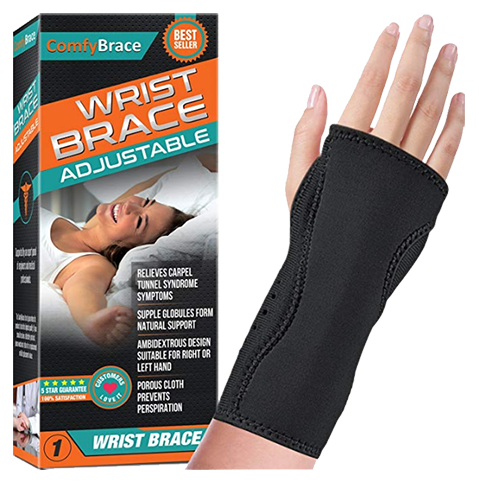Summary (TL;DR)
The ComfyBrace helped my carpal tunnel pain, but a letter from the company pressuring a positive review raised red flags. While online reviews can be useful, be critical of those that seem promotional or use emotional appeals to influence your decision. Focus on reviews with detailed descriptions and consider the reviewer’s background for a more well-rounded perspective. When evaluating products, prioritize genuine user experiences over potentially manipulated reviews.
Diagnosed with carpal tunnel syndrome a few years back, I’m no stranger to wrist pain. While avoiding repetitive tasks initially kept the pain at bay, using a mouse for extended periods can still trigger it. This past year, when the familiar ache returned, I turned to Amazon in search of a solution. That’s where I came across the ComfyBrace, which boasted impressive ratings and seemed like a potential answer to my woes. I decided to give it a try, and the brace arrived promptly. Thankfully, within a week of using it, my wrist pain noticeably subsided. While I still wear the brace at night for comfort (minus the metal insert), it’s not exactly ideal for typing.
The Uncomfortable Request
A few weeks after receiving the ComfyBrace, I received a letter in the mail from the company claiming it was from the owner. The letter expressed concern about the product’s struggle to gain reviews and the potential impact on sales.

Considering Review Credibility
At the time of writing, ComfyBrace boasts 41,957 reviews on Amazon, garnering an overall rating of 4.5/5. While positive reviews can be a valuable resource for potential customers, it’s important to be critical of the information they present.
The letter I received requesting a review highlights a potential issue with review credibility. Companies pressuring customers for positive reviews can skew the overall perception of a product. This makes it challenging to determine if the reviews accurately reflect the product’s true effectiveness.
To make informed purchasing decisions, consider the following when evaluating online reviews:
- Review Content: Look for reviews that offer detailed descriptions of the user’s experience, both positive and negative. Reviews that solely focus on praise or rely heavily on emotional appeals might be less reliable.
- Reviewer Background: Does the reviewer have a history of reviews across different products? A reviewer with a consistent track record might offer a more trustworthy perspective.

Final Thoughts
By taking a critical approach to online reviews, you can ensure you’re basing your purchasing decisions on genuine user experiences.
The ComfyBrace proved to be an effective solution for my carpal tunnel pain. However, the experience with the unsolicited review request raises concerns about the potential for bias in online reviews.
By being mindful of potentially manipulative tactics and critically evaluating reviews, you can ensure you’re basing your purchasing decisions on genuine user experiences.
Ultimately, the decision of whether to use the ComfyBrace is yours. However, I hope this article empowers you to approach online reviews with a critical eye and make informed choices.
Disclaimer: I am not affiliated with ComfyBrace in any way. This article details my personal experience with the product and is intended for informational purposes only.






